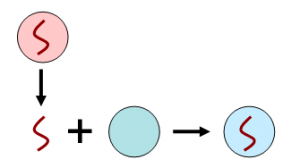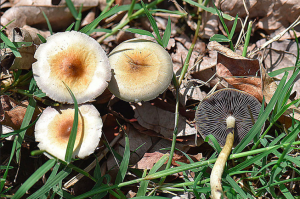I’m sure that many of you have heard of magic mushrooms, maybe you’ve even had first-hand experience with them, but where exactly does their name originate from, and why are there so many different kinds?
Basically, magic mushrooms are hallucinogens. They are substances that cause alterations to your perception, your thoughts, and even to your feelings. Essentially, they cause you to “trip,” or “trip out,” because it’s almost as if they are taking you on a mind-altering journey.
The substance behind all of these fascinating effects is a naturally occurring drug known as psilocybin, and it is produced in more than 100 different species of mushrooms. When psilocybin is ingested, it is converted into psilocin, and this is the element that actually causes the hallucinogenic effects characteristic of most magic mushrooms.
For those of you still interested in the psychedelic effects of psilocybin, here is an interesting video of psychopharmacologist Roland Griffiths’ knowledge on this drug and how it may even prove to be beneficial to the terminally ill.

The real question now is, why is this specific chemical present in so many different species of mushrooms? Well, a few scientists shared that same inquiry and this led to a study that was published in the journal Evolution Letters. This study has suggested that the production of psilocybin is primarily used as a defense mechanism against the overconsumption of the mushroom population by insects. A common side effect of psilocybin is the suppression of appetite, therefore, by causing these insects to “trip,” the bugs become less hungry and are less likely to consume more of the mushrooms.
However, this isn’t even the most interesting part. The study actually found that the genes that cause the production of psilocybin were very similar amongst distant species of mushrooms, even more so than some genes shared between members of the same species. According to the researchers, this illustrates that these genes are not inherited from a common ancestor, but are actually transferred between different species of mushrooms. This phenomenon is known as Horizontal Gene Transfer (HGT).
In essence, the genes are passed from species to species during HGT and if the gene proves to be useful, this process will continue until as many species as possible can benefit from them. Hence, the presence of psilocybin in over 100 different species of mushrooms. HGT is thought to be rare in complex living things and much more common in single-celled organisms like bacteria, making this phenomenon even more incredible.

A very simplified version of HGT and the passing of DNA from one cell to another of a different species; photo courtesy of Gregorius Pilosus from Wikimedia Commons
In a way, these mushrooms have worked together to form a solution to a problem that their individual genetic codes could not deal with alone. Now, the presence of these psilocybin-producing genes has become very widespread and has produced a huge variety of magic mushrooms. So, the next time you’re working in a team and you hear your group members stuck in a disagreement, let them know that if mushrooms can work together, so can they, and then maybe you’ll all be able to produce a little magic too.
By Silvana Jakupovic




